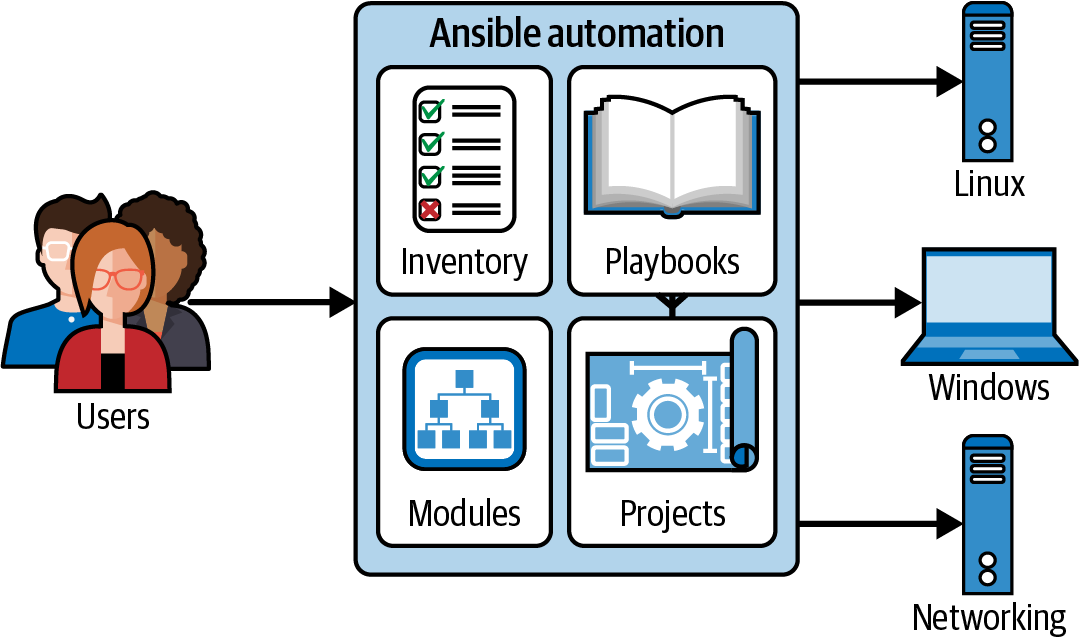Chapter 19. Custom Modules
Sometimes you want to perform a task that is too complex for the command or shell modules, and there is no existing module that does what you want. In that case, you might want to write your own module.
You can think of modules as the “verbs” of the Ansible “language”—without them, the YAML would not do anything. Ansible modules are programmed in Python for Linux/BSD/Unix machines and in PowerShell for Windows machines, but in principle they can be written in any language. Figure 19-1 shows the major components of Ansible: projects witplaybooks, inventory, and modules.

Figure 19-1. Modules
Example: Checking That You Can Reach a Remote Server
Let’s say you want to check that you can connect to a remote server on a particular port. If you can’t, you want Ansible to treat that as an error and stop running the play.
Note
The custom module we will develop in this chapter is basically a simpler version of the wait_for module.
Using the Script Module Instead of Writing Your Own
Recall that back in Chapter 7, in Example 7-13, we used the script module to execute custom scripts on remote hosts. Sometimes it’s simpler to use the script module than to write a full-blown Ansible module.
Lorin likes putting these types of scripts in a scripts folder along with his playbooks. For example, we could create a script file called playbooks/scripts/can_reach.sh that ...
Get Ansible: Up and Running, 3rd Edition now with the O’Reilly learning platform.
O’Reilly members experience books, live events, courses curated by job role, and more from O’Reilly and nearly 200 top publishers.

